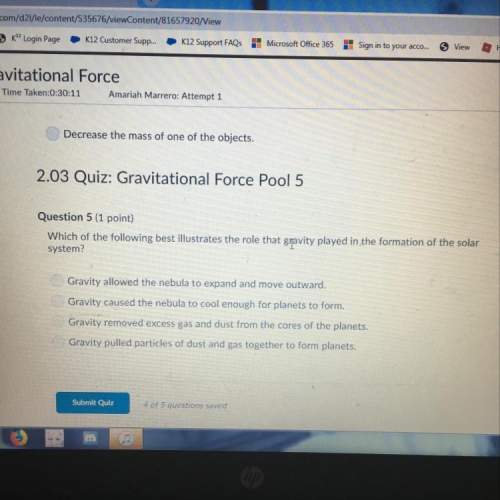
Chemistry, 11.07.2019 07:30 alejandra1201
If a solution containing 126.27 g of mercury(ii) nitrate is allowed to react completely with a solution containing 17.796 g of sodium sulfide, how many grams of solid precipitate will be formed?

Answers: 1


Another question on Chemistry

Chemistry, 22.06.2019 10:10
Stage in which a typical star has completely stopped fusion
Answers: 1

Chemistry, 22.06.2019 12:20
Achemistry student weighs out 0.306 g of citric acid (h3c6h5o7), a triprotic acid, into a 250 ml volumetric flask and dilutes to the mark with distilled water. he plans to titrate the acid with 0.1000 m naoh solution. calculate the volume of naoh solution the student will need to add to reach the final equivalence point. be sure your answer has the correct number of significant digits.
Answers: 3

Chemistry, 22.06.2019 12:50
What is the chemical name of the compound na2co3? use the list of polyatomic ions and the periodic table to you answer. a. sodium carbon oxide b. sodium carbonate c. sodium(ll) carbonate d. sodium oxalate
Answers: 1

Chemistry, 22.06.2019 14:30
What is the relationship between wind and ocean waves? question 17 options: wind moving at higher speeds will transfer more energy to the water, resulting in stronger waves. wind moving at higher speeds will transfer energy over a larger part of the ocean water, resulting in waves with a shorter wavelength. winds moving at higher speeds with cause water to move forward at faster rates, causing larger ocean waves. winds moving at higher speeds will affect deeper water, resulting in waves that move at a faster rate. how do temperature and salinity affect deepwater currents? question 15 options: as temperatures and salinity levels of water increase, the water rises to the surface where it creates currents as it moves to colder regions. they create changes in wind direction, moving denser water in the same direction as the wind and causing the deepwater circulation patterns found in the ocean. they equalize the forces on undersea currents caused by the coriolis effect as they replace more dense water with less dense water. they create density differences that cause dense deepwater currents to flow toward the equator where they displace less dense, warmer water above them.
Answers: 2
You know the right answer?
If a solution containing 126.27 g of mercury(ii) nitrate is allowed to react completely with a solut...
Questions

Mathematics, 30.11.2021 20:10

SAT, 30.11.2021 20:10

Mathematics, 30.11.2021 20:10


Mathematics, 30.11.2021 20:10

History, 30.11.2021 20:10




Mathematics, 30.11.2021 20:10

Geography, 30.11.2021 20:10

Business, 30.11.2021 20:10








Computers and Technology, 30.11.2021 20:10

 .....(1)
.....(1)


 of mercury (II) nitrate
of mercury (II) nitrate of mercury (II) sulfide
of mercury (II) sulfide



